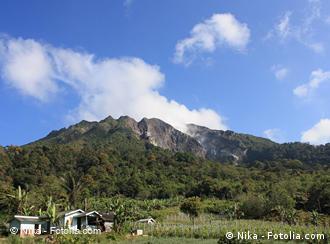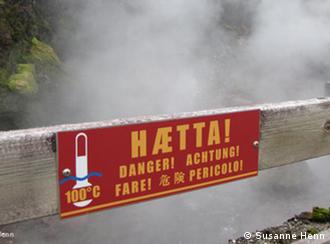Guest Service / Customer Experience Mgmt
A Tale of Two Segments: Can Budget Hotels Match Upscale RevPAR Gains?
By Dan Denston, Executive Director, Mystery Shopping Providers Association - North America
No business has been unaffected by the economic downturn of the last few years. Most often, the state of the economy IS the state of the hospitality industry. Though the current recovery of hotel industry, overall, has been stronger than that of most businesses.
PriceWaterhouseCoopers (PwC) says as the US economy inched forward, the travel segment experienced a “robust recovery.” In 2011, PwC reports, the hotel industry experienced an 8.2 percent increase in Revenue Per Available Room (RevPAR), just 2 years after it reported a 17 percent dip.
But when you dig deeper, you notice the more upscale properties are faring better and are forecast for a greater RevPAR boost than economy brands. While we won’t assume anyone is out of the woods at all, it seems clear that budget hotel brands need to focus on the “blocking and tackling” methods of filling rooms.
Many budget hotel clients of mystery shopping firms are reporting that a constant, almost hyper focus on ensuring that price, service and amenities is helping them compete within their segment, and that customers are beginning to expect an upscale feel at modest prices. Tracking that delivery across an entire chain of hotels seems daunting but once executed – our clients tell us – puts them at a RevPAR advantage compared to neighboring properties and competitor brands.
The State of Recovery

Leading hotel consulting firms are predicting healthy progress for lodging in 2013; PKF Hospitality Research last fall predicted an overall RevPAR boost of 6.2 percent for the year, while PwC tabbed growth at 5.6 percent.
“Backing all apparent economic trends, lodging has been a leading industry during the sluggish economic recovery,” PKF Hospitality Research President R. Mark Woodworth has been quoted as saying. “This is different from past recovery periods when hotels typically lagged other industries.”
Gains in corporate profits and business travel have lifted the luxury segment, with an 8.1 percent RevPAR gain in 2012; upper upscale, upscale and upper midscale registered gains between 6 and 7 percent which midscale and economy brands lagged slightly behind at 5.7 and 5.6 percent increases, according the PwC. Their current year forecasts show midscale and economy estimates in the 3 percents for 2013 while the upper brands between 5-7 percent. (It should be noted, independent hotels fell about in the middle in both 2012 numbers and 2013 estimates.)
The challenge for midscale and economy brands is clear: stand up and step out
“While RevPAR for the upscale hotel space has seen a great climb from the recession, the limited service and budget hotel segment is struggling to keep pace,” said Chuck Paul, CEO of A Closer Look, an MSPA member company specializing in the hotel industry. “In order to keep up, the more modestly-priced brands simply must do more and be more responsive to what customers expect or want at that level.”
Travelers, at all price points, want to relax and enjoy a rewarding experience. Whether it’s business travel, vacation, or visiting family, travelers largely associate stress with the “travel” aspect of their journey. Equally as much, they anticipate – even demand – to be relaxed during the lodging portion of their trips.
Budget hotels that offer more full-service amenities, such as flat screen TVs, luxury bedding, and a more service focused dining and bar experience are scoring better in customer satisfaction scores, Paul said.
“Most often a hotel guest anticipates all his or her needs can be met on the property,” he said. “They want a good meal, perhaps a proper workout, available free Wi-fi, and adequate entertainment options. RevPAR is more about booking the room than it is adding on once a guest arrives, so budget brands must make the stay as convenient as possible.”
Hotels that pay sharp attention to the Online Travel Agencies (OTA) are doing the best when it comes to both capturing the traveler’s attention and seeming competitive in pricing, MSPA members report. Because hotel guests use a website or app such as Trip Advisor essentially like Google for a hotel stay, hotels must put several policies in place, such as:
- Continually monitor neighboring properties’ pricing online;
- Ensure all its rates are consistent with what is quoted on an OTA;
- Enact policies that are flexible in matching some competitors’ OTA pricing.
Member companies report that even daily monitoring sometimes is not enough and they are increasingly working that service into their mystery shopping plans to gauge not only pricing, but the booking experience for a customer.
There IS Such a Thing as a Free Meal
The question of breakfast has long been a tricky one for hotels. Whether breakfast is free or not – that’s a whole other debate – a cloudy picture can be detrimental for a budget brand’s RevPAR. A hotel client of MSPA member Bare International in 2010 asked the company to monitor whether employees were collecting payment for breakfast. Evaluators books rooms without breakfast and subsequently attempted to eat without paying.
In 2010, 37 percent of evaluators were able to eat without being charged. Following that round of mystery shops and evaluation by Bare International, the client began intensive training with hotel team members. A year later, 25 percent of guests enjoyed a free breakfast. Through the first three quarters of 2012, that number has dipped to 23 percent.
A 14 percent dive in free breakfasts for guests across a budget hotel chain represents a significant amount of revenue. It is one of several revenue-boosting policies and procedures that can be identified by knowing your own company and evaluating whether you are honoring your brand promise to customers. The only true “cost” in the free breakfast example is the more intensive training of employees; otherwise the decrease in free meals was literally found money.
“It has become such a norm to include breakfast with a stay that the hotels that choose not to include it are at a greater disadvantage,” said Becky Fisher, the global client relations manager in Bare’s hospitality department. “However, hotels that have different packages (with or without breakfast) need to be sure all guests have purchased the inclusive package or pay at the door. In addition, hotels that only have inclusive packages need to be sure all persons eating breakfast are actually paying guests. Without a process in place, hotels are giving away many free breakfasts, which of course erodes the bottom line and a property’s RevPAR.”
Not all improvements are “found money” of course. Boosting RevPAR at the budget level often requires significant investments. Meeting – or exceeding – customer expectations come from improvements and relationships aimed at improving the customer experience.
A client of A Closer Look, for example, rebranded and consolidated each of its brands into one. In a way they have done what most budget brands may be forced to execute: bringing guests midscale amenities for “premium economy” prices.
For example, guests often shun the pricey bottled water in the room’s minibar and bring their own water. But the client of A Closer Look struck a deal to offer filtered water in sinks in guest rooms. A commitment to going green is starting to prove to be an ideal RevPAR investment, even if its ROI can’t be perfectly measured.
Very few hotel guests view their rooms as “just a bed to sleep in.” Whether they travel for business or pleasure, they need their room to be a living room, comfortable bedroom and occasionally a dining room. But they also need it to be a launching pad for their day.
“Guests need to get ready for the day in their room and if your bathroom does not elevate the guest experience, you will suffer,” Bare’s Becky Fisher said. “We see hotels paying great attention to detail in the bathrooms: curved shower rails, steam-free mirrors, hairdryers with increased wattage and upscale shampoos and soaps. Guests expect a lot of things, and any one thing that goes wrong could send them across the street next time. So budget hotels especially are understanding and acting upon that reality.”
Mystery Shopping Boosts Even the Best
Brands that are among the best are still missing opportunities every day. The difference between a 5 percent RevPAR gain and a 7 percent increase, for a property or a brand, can be enormous.
Newport Hospitality Group always prided itself for scoring at the top of their brands and thought they were providing “knock your socks off service” according to Lizz A. Chambers, VP of Sales and Organizational Development for the brand.
“The first round of shops were disappointing to say the least. There were no Wow’s in them … I was floored,” she said.
The brand put an emphasis on improving through mystery shops provided by A Closer Look – this way every customer was a mystery shopper in the eyes of employees. Owners began to ask for monthly shops after seeing the instant improvement.
“Our brand began with an average score in the 80th percentile of the company brands, and we ended last year in the 90s,” Chambers said. “We have a goal this year to improve that another 5 percent and to be consistently in the top 5 of all our brands. (The mystery shops) keep us on our toes and our guests, owners and associates all benefit.”
And any hotel manager can tell you, an increased reputation is the best thing for revenues and your RevPAR standings.
Dan Denston, the Executive Director of the Mystery Shopping Providers Association (North America), has an extensive history with associations and association management throughout the country, as well as other varied business and educational experience. Mr. Denston has worked for and with associations and association management companies in the Washington area in membership and member services, conventions and trade shows, marketing, publishing, and government relations. In addition to mystery shopping, his association management experience has included work with the construction, manufacturing, and medical industries. Mr. Denston can be contacted at 502-574-9033 ordan@mysteryshop.org Extended Bio...
HotelExecutive.com retains the copyright to the articles published in the Hotel Business Review. Articles cannot be republished without prior written consent by HotelExecutive.com.






